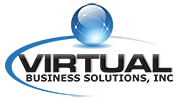Businesses create and need to handle more data than ever before. In the past, this would mean that there would be a lot of wasted data. Today’s document management system can completely revolutionize your business. Let’s take a look at the steps that go into creating a comprehensive digital document management system.
Document Capture and Creation
The first step to creating a comprehensive document management system is to get the documents into your new system.
Create New Documents
This step involves the creation of new documents, which could be anything from reports and memos to spreadsheets and presentations.
Capture Existing Documents
Capture physical documents by scanning them or collect digital documents from various sources like email, cloud storage, or file servers.
Document Classification and Indexing
Getting started classifying the data can be one of the biggest speed bumps to the creation of a comprehensive document management system.
Categorize Documents
Assign categories or metadata tags to each document to make it easy to classify and retrieve them later.
Index Documents
Create an index or catalog of documents based on metadata, keywords, or other identifiers to facilitate quick searches.
Storage and Organization
Determining the underlying technology is something that the IT professionals at Virtual Business Solutions can help your organization with.
Choose a Storage System
Select an appropriate storage system, whether physical file cabinets, network drives, or electronic document management software.
Organize Documents
Establish a consistent and intuitive folder structure or taxonomy to arrange documents logically.
Access Control and Permissions
Security has to be a major point of emphasis when dealing with any data, let alone the operational information of your business.
Define Access Rights
Specify who can view, edit, or delete documents. Implement user roles and permissions to protect sensitive information.
Encryption and Security
Ensure that documents are encrypted both in transit and at rest to safeguard against unauthorized access.
Document Retrieval
You would be surprised how much document retrieval can cost your business. Digital document management can mitigate these costs.
Search Capabilities
Provide robust search functionality, allowing users to find documents quickly using keywords, metadata, or full-text search.
Filters and Sorting
Enable users to filter and sort search results for better document retrieval.
Collaboration and Workflow
In today’s business, people need secure access from anywhere at any time. A document management system can deliver this flexibility.
Collaboration Tools
Facilitate document collaboration by integrating with tools like document editing suites and communication platforms.
Workflow Automation
Implement automated approval processes, notifications, and routing to streamline document-related workflows.
Backup and Disaster Recovery
Many situations can arise where data is unavailable or lost, having up-to-date copies can operate as a failsafe for many businesses.
Regular Backups
Schedule regular backups of documents to prevent data loss in case of hardware failures or disasters.
Disaster Recovery Plan
Develop a disaster recovery plan to ensure the continuity of document access and management in adverse situations.
Compliance and Retention
Today, many businesses operate under government or industry-sponsored mandates and need to stay in compliance with these regulations for the good of the business.
Compliance Policies
Establish and enforce document retention and disposal policies to comply with legal requirements and industry regulations.
Audit Trails
Maintain audit trails to track document access and changes for compliance purposes.
Monitoring and Maintenance
Keeping a dedicated eye on your IT systems is nothing short of essential. Document management is no different.
Regular Maintenance
Periodically review and update the document management system, including metadata, security settings, and access permissions.
Monitoring and Reporting
Implement monitoring tools to track system performance and generate reports on document management activities.
Training and User Adoption
It’s important that you train your employees quickly so that you can get the most benefit from your document management platform.
User Training
Provide training and support to ensure that users understand and effectively use the document management system.
User Feedback
Encourage user feedback to make continuous improvements to the system.
Continuous Improvement
You need to revisit your document management plan regularly, just as you revisit your other IT systems.
Evaluate and Adapt
Continuously assess the document management process and technology, making improvements based on feedback and changing business needs.
We understand that managing your organization’s documents isn’t ever going to be cheap and easy, but with a dedicated document management platform, it can be much easier and more effective than more antiquated file management strategies. If you would like to learn more about what Virtual Business Solutions can do in terms of document management or any other IT-related strategy, give us a call today at (504) 840-9800.


Comments